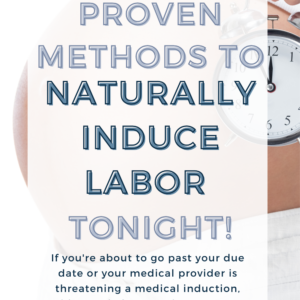Every mama wants a fast, easy and healthy labor and delivery. You might have heard about dates being a pregnancy superfood but do they really work? This is everything you need to know about dates during pregnancy and whether they’re worth the hype.
Read more: Dates During Pregnancy – Do They Really Ease Labor?
Dates During Pregnancy –Everything You Need to Know
If you’re a mom who wants a natural labor and delivery, you’ve probably heard about the magic of dates during pregnancy. If not – it’s important that you read on! Not only can dates shorten your labor, they can also decrease pain associated with contractions and pushing.
But what exactly do dates do? Why do they help? And how many do I need to eat? These all questions we’re digging further into so you can get all of the pregnancy benefits of dates – even if you don’t like them.
[cp_modal display=”inline” id=”cp_id_a1329″][/cp_modal]
Do dates really help during pregnancy?
All pregnant moms want a fast and easy labor and delivery. Getting that goal can be as simple as eating dates. A pregnancy superfood you never thought of. But why do dates during pregnancy help?
Benefits of dates during pregnancy:
- Has an oxytocin-like effect on the body, leading to increased sensitivity in the uterus.
- Stimulates uterine contractions
- Aids in controlling postpartum bleeding to lessen the potential of postpartum hemorrhaging.
Dates have an oxytocin-like effect on your body. This leads to increased sensitivity in the uterus. Because of the sensitivity, when you start having contractions, the contractions are able to do more work in less time.

Oxytocin is the hormone responsible for stimulating uterine contractions. Since dates help stimulate uterine contractions, they’re also excellent to lessen postpartum hemorrhaging. Your uterus is able to contract more strongly and effectively to lessen bleeding.
Nutritional Benefits:
- Potassium – One of the best electrolytes. It helps maintain the water and salt balance in your body to prevent dehydration, electrolyte in-balance, and maintain good blood pressure.
- Vitamin K – Maintains healthy bones and proper blood clotting. Your body lacks vitamin K when born, so eating extra before deliver can help supplement.
- Fiber – Helps keep you full, relieves constipation and regulates bowel movements.
- Magnesium – Relieves muscle spasms and cramps. Can also aid in sleeplessness.
Science supporting dates during pregnancy
This study shows that women who consumed 6 dates a day the four weeks leading up to delivery had:
- a higher cervical dilation
- more intact membranes
- more likely to go into spontaneous labor
- a shorter first stage of labor
- significantly reduced need for augmentation or induction
- more favorable delivery outcomes
This study published in the Journal of Midwifery & Reproductive help deducted similar results:
- higher Bishop Scores (effacement, dilation, position and fetal station) when admitted to the hospital
- higher cervical dilation
- lower rates of cesarean sections and vacuum/forceps delivery
- higher success of a vaginal delivery after labor induction
When to start eating dates during pregnancy?
In the studies above, participants started eating about 3-4 dates a day (about 70-75 grams) four weeks from their given due date.
You can enjoy dates at any point in your pregnancy. Keep in mind they are high in sugar, so if you have trouble with blood sugar, be careful. Otherwise, dates are a healthy source of many nutritional benefits. They also are a naturally occurring sugar, so they won’t spike your blood sugar and leave you to crash later.
Women who want all the benefits of dates during pregnancy and to have fast and easy labor should enjoy dates everyday starting at 36 weeks pregnant.

How many dates should I eat?
When it comes to dates, there are two different kinds – Medjool and Deglet Noor. The above studies didn’t specify which dates participants ate. It doesn’t matter too much, though, because the dates are nearly identical in nutritional benefits. Their only difference is their size.
Medjool dates are much larger than deglet noor. They’re about twice the size. To get the same amount of recommended serving size, consume 3 mejdool dates or 6 deglet noor dates.
Delicious date recipes
But what if you don’t like dates? Or you’re simply not sure how to add them into your diet besides eating them plain.
Here are a ton of great ways to eat dates during pregnancy and add them into your diet during pregnancy.
- Make this sweet and healthy Date and Almond Candy
- Add them to this yummy, vegan caramel sauce
- Use them in your homemade almond milk recipe instead of sugar as a sweetener
- Add dates to your diet by eating your favorite Larabars
Other ways to ease labor
- Consider a doula – A birth doula is a trained birth coach who will ease labor pain, advocate for your birth wishes and help you make informed decisions to have your best labor.
- Take a childbirth class – Finding the right birth class is one of the best ways to prepare for birth and ease labor. You’ll learn about natural pain management techniques, labor positions, ways your husband can get involved and how to even enjoy your natural childbirth.
- Drink red raspberry leaf tea – Like dates, red raspberry leaf tea has tons of health benefits during your third trimester. It tones and strengthens your uterus so contractions can work harder and labor can be shorter.
- Evaluate your birthplace and health care provider – Before you get to your third trimester, you should make sure your birthplace and health care provider is on the same page as you for your birth preferences. Different birth places and HCPs have different policies, beliefs and procedures regarding birth. Knowing where your practice stands will make a huge difference.
- Create a birth plan – A written birth plan may seem like a way of the past. However, writing down your birth preferences keeps everyone on the same page when you go into labor. It’s also an excellent way for you to make informed decisions about labor, delivery, postpartum and baby that you may not have even known were options.
- Get baby into optimal position – Head down, posterior (facing your back) and engaged is the optimal position. Do this by following the strategies outlined here.
[cp_modal display=”inline” id=”cp_id_a1329″][/cp_modal]
References:















Leave a Reply